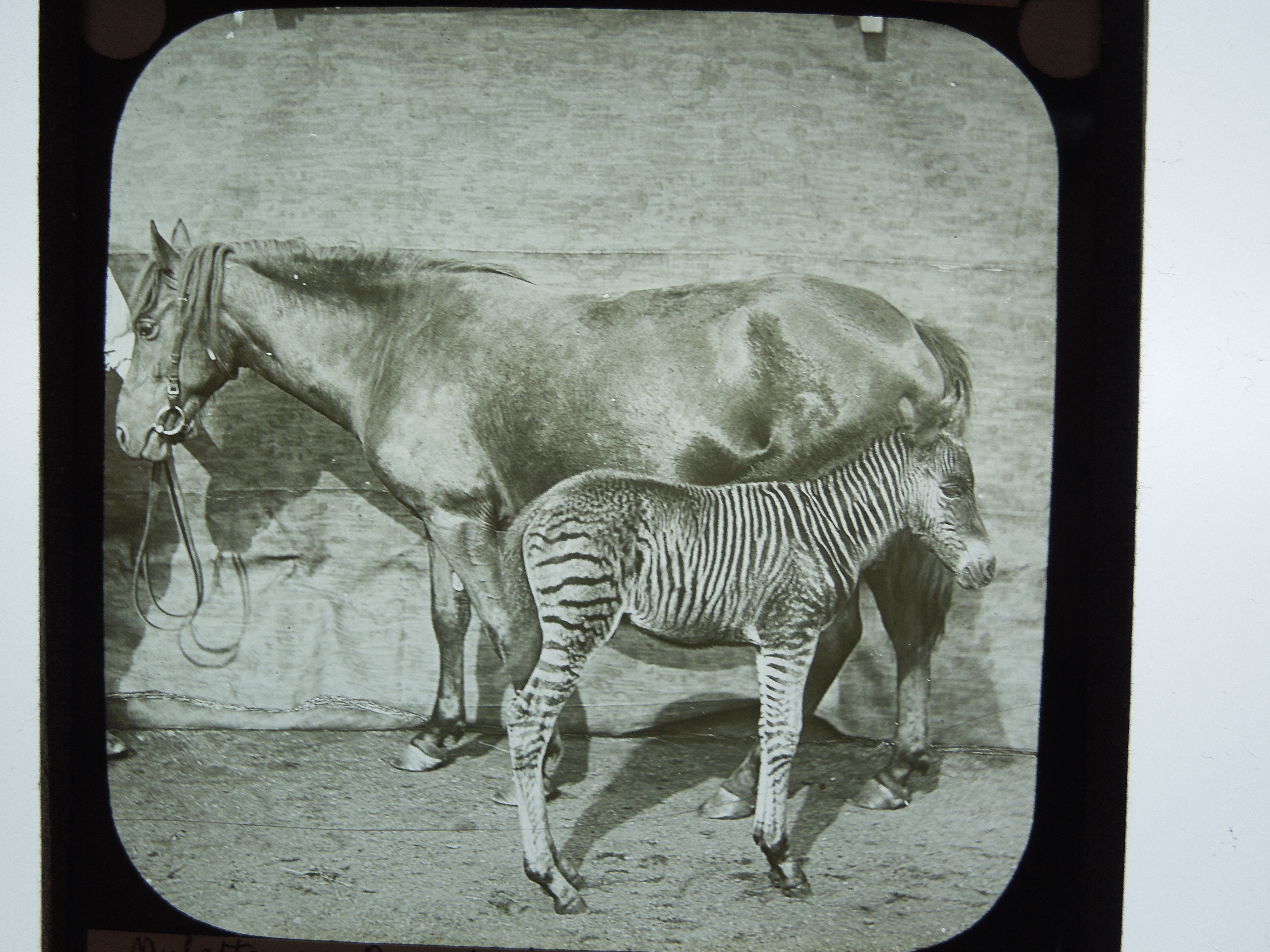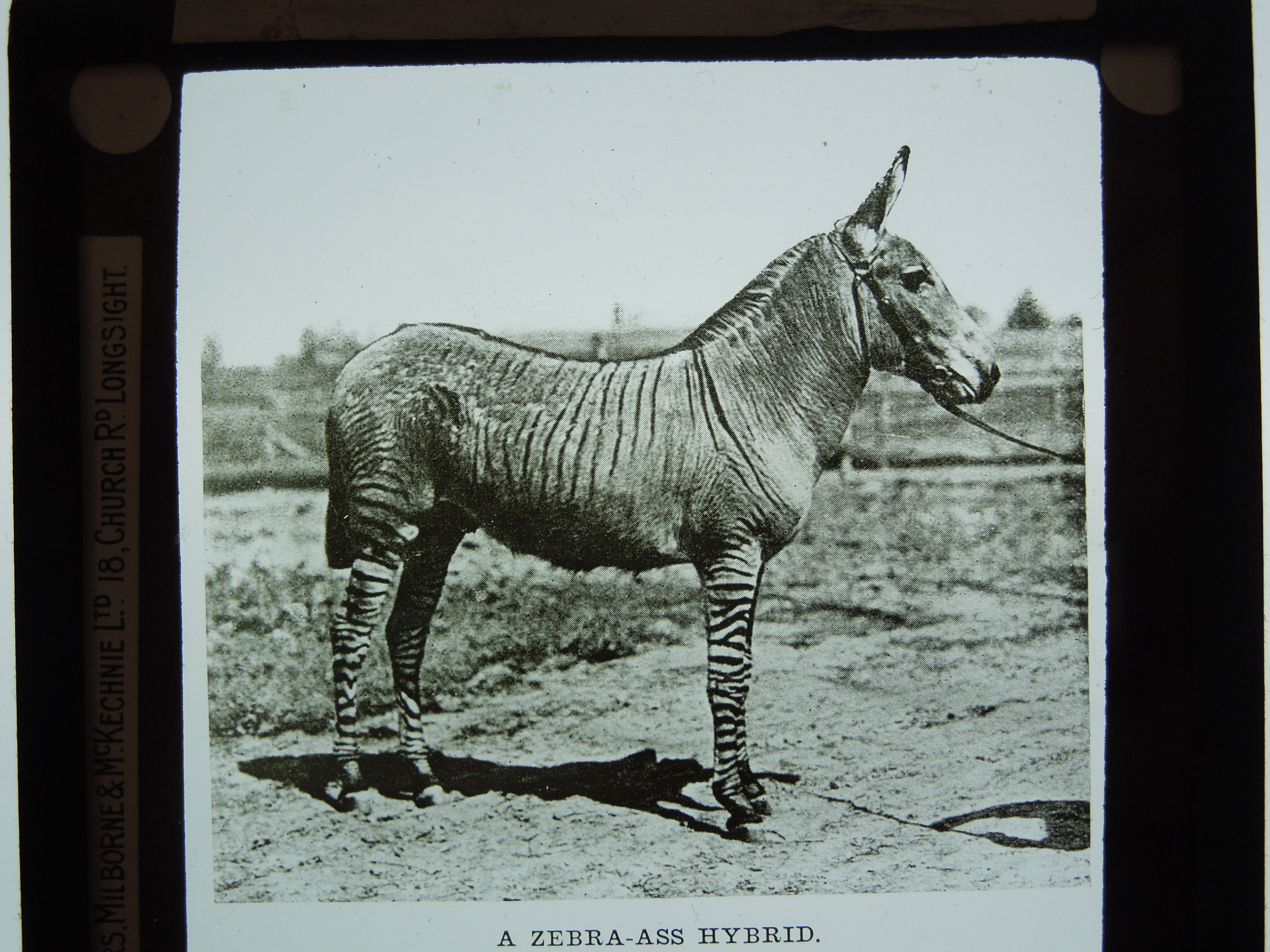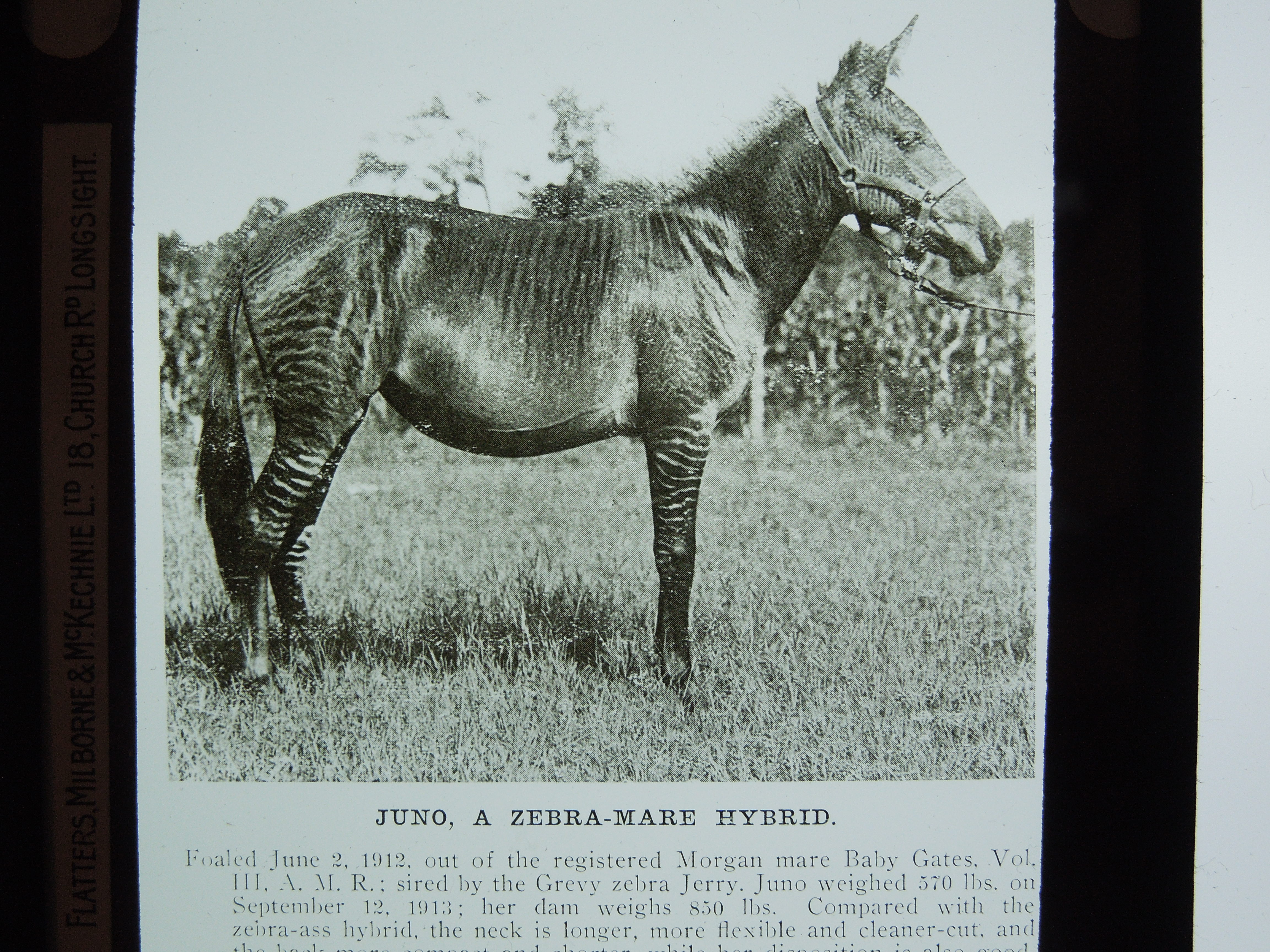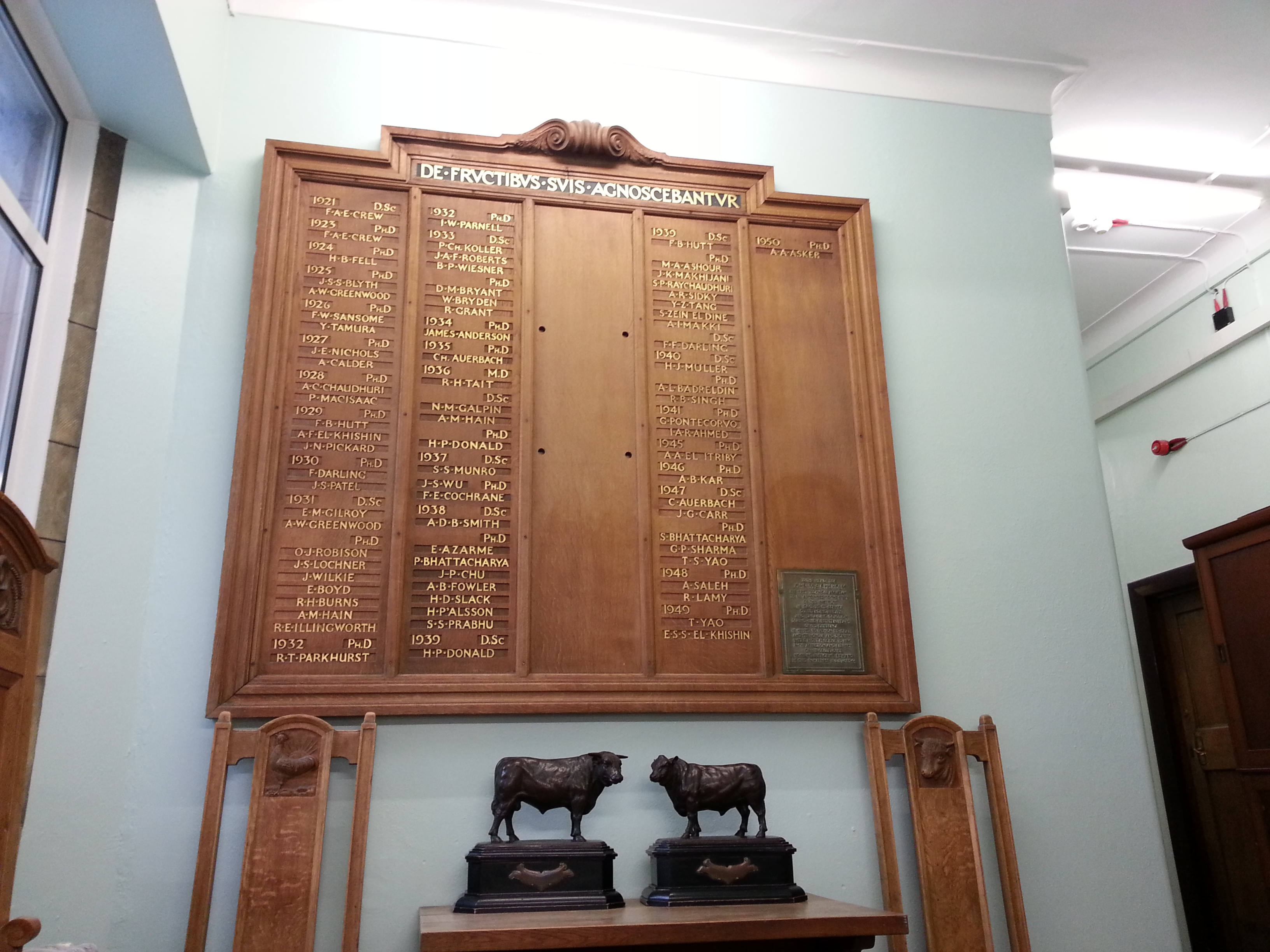“Zebroid, zedonk, zorse, zebra mule, zonkey, and zebrule” – these are the names of the offspring of any cross between a zebra, usually the stallion, and any other equine; however, the offspring of a donkey sire and zebra dam is called a “zebra hinny” or “donkra”, but are rare.
 It was around the years 1894-95, when Scottish zoologist, James Cossar Ewart began his Penicuick Experiments in animal breeding on his private experimental farm where he conducted many pioneering investigations in genetics. His most famous experiments were related to telegony, which is the theory, accepted at the time by most scientists and breeders, that ‘a previous sire may so “infect” the dam served by him as to impress certain of his characters upon her subsequent offspring by other sires.’ Ewart’s experiments with a variety of species; however, were uniformly negative. One of the most famous experiments with telegony was Darwin’s lengthy citation of ‘Lord Morton’s Arab mare which first being served by a quagga produced a striped hybrid foal, and subsequently gave birth to an Arab foal as a result of mating with Sir Gore Ouseley’s Arab stallion. This foal, which is figured by Darwin, had striped markings that were said to resemble those of the quagga with which the mare had first mated.’ Ewart attempted to repeat this experiment; however, the quagga species had become extinct by that time, so he decided to use a Burchell’s zebra stallion which served several different breeds of mares which pro
It was around the years 1894-95, when Scottish zoologist, James Cossar Ewart began his Penicuick Experiments in animal breeding on his private experimental farm where he conducted many pioneering investigations in genetics. His most famous experiments were related to telegony, which is the theory, accepted at the time by most scientists and breeders, that ‘a previous sire may so “infect” the dam served by him as to impress certain of his characters upon her subsequent offspring by other sires.’ Ewart’s experiments with a variety of species; however, were uniformly negative. One of the most famous experiments with telegony was Darwin’s lengthy citation of ‘Lord Morton’s Arab mare which first being served by a quagga produced a striped hybrid foal, and subsequently gave birth to an Arab foal as a result of mating with Sir Gore Ouseley’s Arab stallion. This foal, which is figured by Darwin, had striped markings that were said to resemble those of the quagga with which the mare had first mated.’ Ewart attempted to repeat this experiment; however, the quagga species had become extinct by that time, so he decided to use a Burchell’s zebra stallion which served several different breeds of mares which pro duced striped hybrid foals, called “Tartan Cuddies” by the people in the Midlothian area. One particularly fine hybrid of this pairing was “Romulus”. The mares were then bred to horses of their own breeds, but the resulting ‘subsequent foals’ never showed any evidence of The mares were then bred to horses of their own breeds, but the resulting ‘subsequent foals’ never showed markings or traits of the previous zebra sire. Ewart collected these findings into a book entitled The Penycuick Experiments (1899).
duced striped hybrid foals, called “Tartan Cuddies” by the people in the Midlothian area. One particularly fine hybrid of this pairing was “Romulus”. The mares were then bred to horses of their own breeds, but the resulting ‘subsequent foals’ never showed any evidence of The mares were then bred to horses of their own breeds, but the resulting ‘subsequent foals’ never showed markings or traits of the previous zebra sire. Ewart collected these findings into a book entitled The Penycuick Experiments (1899).
In addition to these lovely images of Ewart and Romulus, I found a couple of images of a zorse and a zonkey!









